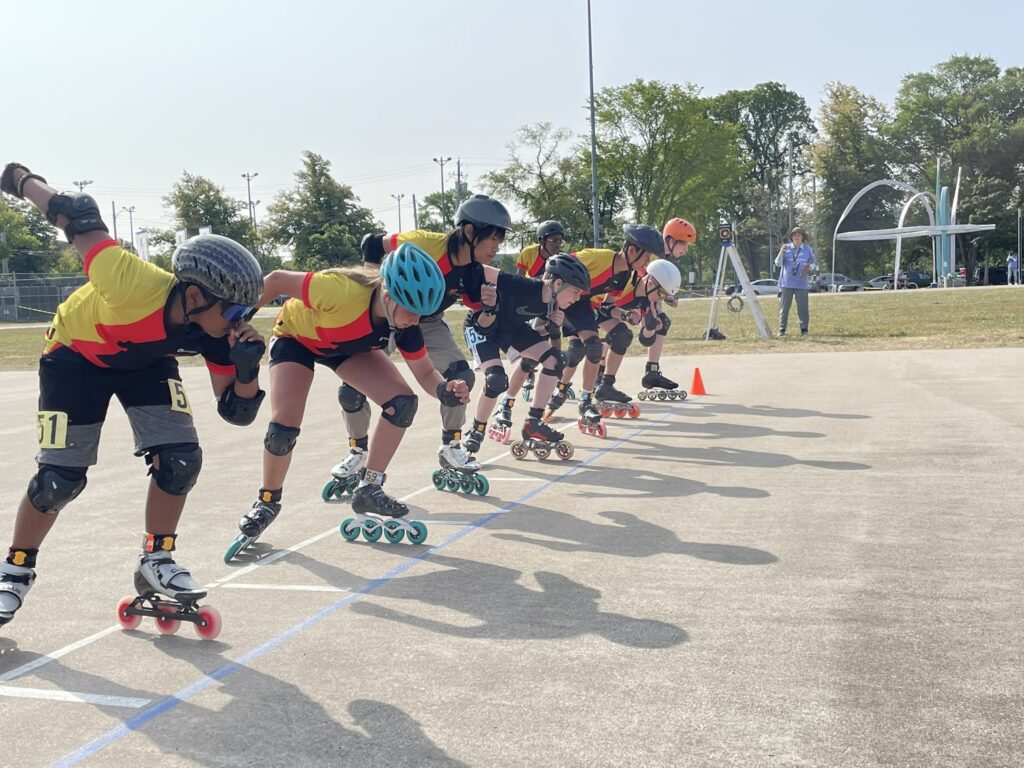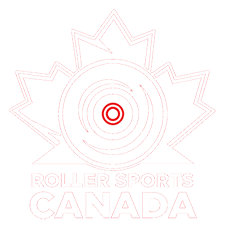Roller Sports Canada’s Speed Division is proud to be associated to World Skate, the international Governing Body for Roller Sports. Through RSC’s Speed Division, registrants can access certain competitions in Canada including the Canadian Championships, and through a qualifying process aim to qualify to represent Canada at international events such as the Pan American Games & World Championships/ World Roller Games. Opportunities to access coach and official/ judge education & training and certification are also available.

WELCOME TO RSC'S SPEED DIVISION
SPEED NEWS (scroll down for rules, clubs, contact, events + info)
Speedy Kids Hosts Amazing Canadian Outdoor Speed Championships in Halifax: The 2025 Canadian Roller Speed Championships rolled into early August with excitement and great speed. Speed Kids delivered an outstanding event, giving athletes a fantastic opportunity to race, shine, and put on a great show for everyone in attendance.
 July 2025- Rules for RSC Speed- Updated
July 2025- Rules for RSC Speed- Updated
The Rules for RSC Speed have undergone a significant update, resulting in a clearer and more enforceable framework that strengthens integrity, fairness, and safety. The revisions were completed through a careful and thoughtful review process.
- Rules for RSC Speed [English document PDF- August 2025 version]
July 2025- VRL Hosts Successful Marathon, Racers Fly On Wheels in Montreal
Montreal-area club VRL Le Club hosted the hosted well over 100 racing and fitness enthusiasts and racers for the annual Marathon Roller du Marathon. Participants completed 42km, 21km, 10km, 5km, 1 km distances and an obstacle course for young skaters!
CANADIAN CLUBS, TEAMS, GROUPS
- Toronto: Toronto Inline Skating Club (TISC)
- Montreal/ Laval: VRL Le Club (VRL)
- Halifax: Speedy Kids
- Gatineau/ Ottawa: Club Roller Vitesse Gatineau (CRVG)
REGISTER + CONTACT
If you wish to register with RSC and its Speed Division check out RSC Registration + Membership page, if you need to get in touch, please contact speedcommittee@rollersports.ca
You can keep in touch and updated with additional inline and roller speed skating content on RSC Speed Division’s Facebook page.
EVENTS + COMPETITIONS
- 2025-06-18– Mercredi Roller, Laval, Quebec
- 2025-06-25– Mercredi Roller, Laval, Quebec
- 2025-07-05– Marathon Roller Du Canada, Montreal, Quebec
- 2025-08-09 to 10– Canadian Championships [Announcement] [Information] [Registration], Halifax, Nova Scotia
- 2025-08-23– Grand Prix VRL, Laval, Quebec
- 2025-09-21– Inline Challenge, Halifax, Nova Scotia
RULES, DOCUMENTS, POLICIES, HISTORY
- Rules for RSC Speed [English document PDF- August 2025 version]
- [Canadian Teams: List of International Competition Participants]
- Results + Photos: Canadian Championships [2025 Halifax] [2024 Laval (Montreal)]
RACING- TRACKS + RACES
Inline and roller speed skating is a fast-paced sport, with the fastest athletes reaching speeds well in excess of 55km per hour. Inline and roller speed skating events are usually held on closed road circuits (sometimes a few km’s in length), indoor roller rinks or gymnasium, or tracks (asphalt running track 400m in length or 200-meter track with banked (inclined) corners). Races will range from short sprints in small groups of 1 to 6 participants (100-meters up to 1000-meters) and longer endurance events in larger groups upwards of 40 participants (10km points races where first participant across the finish line on given laps on a track awarded points and the one who has collected most points at the end of the race wins, 20km elimination races where the last participant across the finish line on given laps on a track is out), and 42km marathon in groups that can feature hundreds of participants.
INDOOR RACING
Indoor track racing takes place on an oval track measured out on a flat even skating surface. Most indoor skating practices and races are held in roller rinks, gymnasiums, or rinks. A typical indoor race course is 100-meters in length and uses four cones making two curves.
ROAD RACING
Road races are run on varied surfaces. The typical distance for a road circuit is between 240-meters and 700-meters, and the circuit must have a minimum width of 5-meters Marathons can be held on longer road courses, usually on roads, ranging from 2km loop to a 42km point-to-point course.
BANKED TRACK
Banked track racing makes use of a 200-meter standard track with banked (inclined) corners. The track is standard in terms of length, width, height of the banking, and radius of the turns.
THE EQUIPMENT
A typical skate set-up usually features a longer frame that has four wheels (110mm diameter) or three wheels (125mm diameter) and a skating boot that is lower at the ankle compared to a recreational or hockey skate. Top lever racers usually wear a skin suit, gloves/ palm protection, and helmet (all resembling those used in cycling road races) plus glasses. Younger skaters, those new to the sport, and less skilled skaters are usually required to and also tend to use wrist guards, knee pads, elbow pads, and mouth guards.
RESOURCES
The following features a list of curated resources (articles, videos, journals, technical analysis) aimed to help with training, technique, club and sport development, coaching, and of course inspiration! The list will be edited and adjusted so keep coming back and checking out what’s going on!

